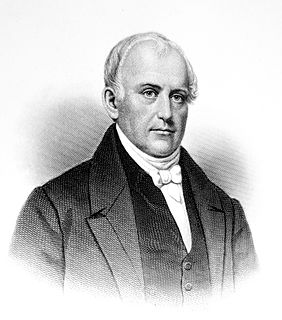Related Research Articles
The high-level equilibrium trap is a concept developed by environmental historian Mark Elvin to explain why China never underwent an indigenous Industrial Revolution despite its wealth, stability, and high level of scientific achievement. Essentially, he claims that the Chinese pre-industrial economy had reached an equilibrium point where supply and demand were well-balanced. Late imperial production methods and trade networks were so efficient and labor was so cheap that investment in capital to improve efficiency would not be profitable.
The American system of manufacturing was a set of manufacturing methods that evolved in the 19th century. The two notable features were the extensive use of interchangeable parts and mechanization for production, which resulted in more efficient use of labor compared to hand methods. The system was also known as armory practice because it was first fully developed in armories, namely, the United States Armories at Springfield in Massachusetts and Harpers Ferry in Virginia, inside contractors to supply the United States Armed Forces, and various private armories. The name "American system" came not from any aspect of the system that is unique to the American national character, but simply from the fact that for a time in the 19th century it was strongly associated with the American companies who first successfully implemented it, and how their methods contrasted with those of British and continental European companies. In the 1850s, the "American system" was contrasted to the British factory system which had evolved over the previous century. Within a few decades, manufacturing technology had evolved further, and the ideas behind the "American" system were in use worldwide. Therefore, in manufacturing today, which is global in the scope of its methods, there is no longer any such distinction.
The economic concept of a capital good is as a "...series of heterogeneous commodities, each having specific technical characteristics ..." in the form of a durable good that is used in the production of goods or services. Capital goods are a particular form of economic good and are tangible property.
Induced innovation is a microeconomic hypothesis first proposed in 1932 by John Hicks in his work The Theory of Wages. He proposed that "a change in the relative prices of the factors of production is itself a spur to invention, and to invention of a particular kind—directed to economizing the use of a factor which has become relatively expensive."

The factory system is a method of manufacturing using machinery and division of labor. Because of the high capital cost of machinery and factory buildings, factories were typically privately owned by wealthy individuals who employed the operative labor. Use of machinery with the division of labor reduced the required skill level of workers and also increased the output per worker.
Technological change (TC) or technological development is the overall process of invention, innovation and diffusion of technology or processes. In essence, technological change covers the invention of technologies and their commercialization or release as open source via research and development, the continual improvement of technologies, and the diffusion of technologies throughout industry or society. In short, technological change is based on both better and more technology.
The local multiplier effect is the additional economic benefit accrued to an area from money being spent in the local economy. The concept has been taken up by advocates for "spend local" campaigns in addition to more formal treatments in the area of regional economic development.

The Heckscher–Ohlin model is a general equilibrium mathematical model of international trade, developed by Eli Heckscher and Bertil Ohlin at the Stockholm School of Economics. It builds on David Ricardo's theory of comparative advantage by predicting patterns of commerce and production based on the factor endowments of a trading region. The model essentially says that countries export the products which use their relatively abundant and cheap factors of production, and import the products which use the countries' relatively scarce factors.
International economics is concerned with the effects upon economic activity from international differences in productive resources and consumer preferences and the international institutions that affect them. It seeks to explain the patterns and consequences of transactions and interactions between the inhabitants of different countries, including trade, investment and transaction.
Labor intensity is the relative proportion of labor used in any given process. Its inverse is capital intensity.

Mechanised agriculture is the process of using agricultural machinery to mechanise the work of agriculture, greatly increasing farm worker productivity. In modern times, powered machinery has replaced many farm jobs formerly carried out by manual labour or by working animals such as oxen, horses and mules.
The dual-sector model is a model in development economics. It is commonly known as the Lewis model after its inventor W. Arthur Lewis. It explains the growth of a developing economy in terms of a labour transition between two sectors, the capitalist sector and the subsistence sector.
Economic stagnation is a prolonged period of slow economic growth, usually accompanied by high unemployment. Under some definitions, "slow" means significantly slower than potential growth as estimated by macroeconomists, even though the growth rate may be nominally higher than in other countries not experiencing economic stagnation.

De-industrialization is a process of social and economic change caused by the removal or reduction of industrial capacity or activity in a country or region, especially of heavy industry or manufacturing industry.
In economics, deskilling is the process by which skilled labor within an industry or economy is eliminated by the introduction of technologies operated by semi- or unskilled workers. This results in cost savings due to lower investment in human capital, and reduces barriers to entry, weakening the bargaining power of the human capital. Deskilling is the decline in working positions through the machinery introduced to separate workers from the production process.
Skill is a measure of the amount of worker's expertise, specialization, wages, and supervisory capacity. Skilled workers are generally more trained, higher paid, and have more responsibilities than unskilled workers.
The Theory of Wages is a book by the British economist John R. Hicks published in 1932. It has been described as a classic microeconomic statement of wage determination in competitive markets. It anticipates a number of developments in distribution and growth theory and remains a standard work in labour economics.

Technological unemployment is the loss of jobs caused by technological change. It is a key type of structural unemployment.

The Industrial Revolution was an epoch during the first 100 years of United States history where the economy progressed from manual labor and farm labor to a greater degree of industrialization based on labor. There were many improvements in technology and manufacturing fundamentals with results that greatly improved overall production and economic growth in the United States.
Engels' pause is a term coined by economic historian Robert C. Allen to describe the period from 1790 to 1840, when British working-class wages stagnated and per-capita gross domestic product expanded rapidly during a technological upheaval. Allen named the period after German philosopher Friedrich Engels, who describes it in The Condition of the Working Class in England. Economists have analyzed its causes and effects since the nineteenth century, with some questioning its existence. Twenty-first-century technological upheaval and wage stagnation have led economists and academics to draw parallels between the two periods.
References
- ↑ Habakukk, H.J. American and British Technology in the Nineteenth Century. London: Cambridge University Press, 1962.
- ↑ Temin, Peter. Causal Factor in American Economic Growth in the Nineteenth Century. London: Macmillan, 1975.
- ↑ Earle, Carville. Geographical Inquiry and American Historical Problems. Stanford, California: Stanford University Press, 1992.
- ↑ Hicks, J.R. The Theory of Wages. London: Macmillan, 1932.
- ↑ Rothbarth, E. “Causes of the Superior Efficiency of U.S.A. Industry as Compared with British Industry.” Economic Journal 223 (September 1946): 383-390.
- ↑ Acemoglu, Daron. “Directed Technical Change.” Review of Economic Studies 69 (October 2002): 781-810.
- ↑ Robert C. Allen, 'The British Industrial Revolution in Global Perspective' (New Approaches to Economic and Social History) ISBN 978-0-521-68785-0
- Rothbarth, E., ‘Causes of the superior efficiency of USA industry as compared with British industry’, Econ. J., 56 (1946), pp. 383–90.